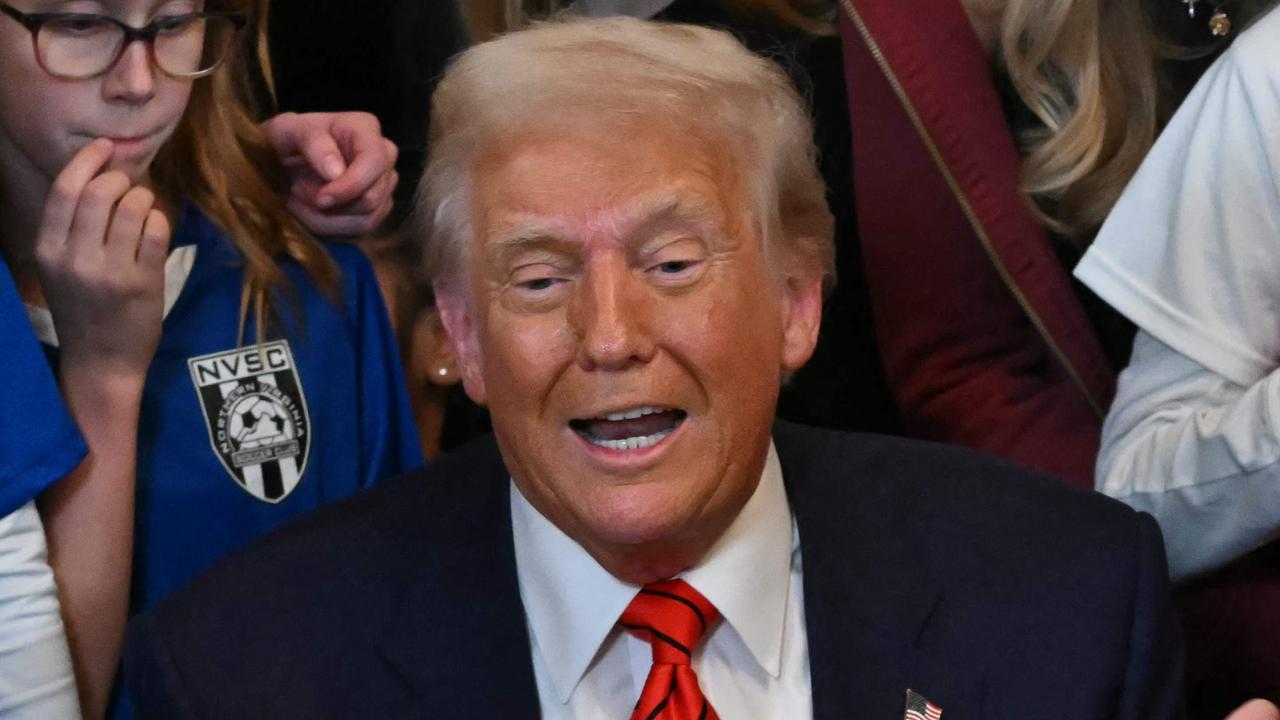Australian war crimes inquiry: 25 elite soldiers linked to murder of 39 civilians
Australia’s army chief is “deeply concerned” some troops did not feel they could report misconduct in Afghanistan, and says the war crimes report is “disturbing”.
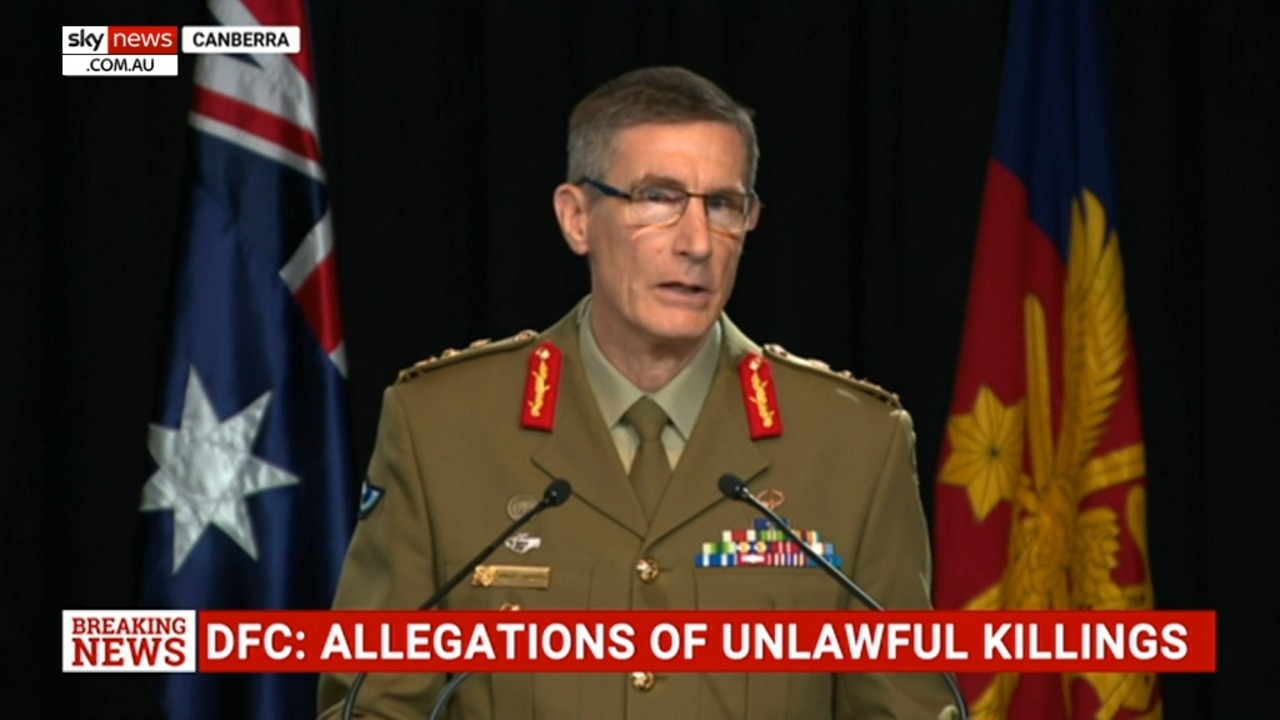
National
Don't miss out on the headlines from National. Followed categories will be added to My News.
Australia’s Chief of the Army is “deeply concerned” that some troops did not feel they were able to report misconduct, and has declared the shocking report into alleged war crimes in Afghanistan “affects us all”.
Lieutenant General Rick Burr said the findings of the report, which allege some members of Australia’s Special Forces committed war crimes while in Afghanistan, were “disturbing and deeply serious.”
“As the Chief of Army, and a Special Forces Officer, I have questioned ‘why did this happen?’, ‘what could have been done to prevent this?’, and ‘how do we ensure this never happens again anywhere in our army’,” Lieutenant General Burr said in a video posted to social media.
“Some of our people strayed from our values by not operating lawfully, ethically or responsibly. These individuals will be held to account.
“I am deeply concerned that some people did not feel empowered or safe to speak up sooner when they saw or heard of misconduct. Not holding each other to account and tolerating misconduct is not what we stand for.”
He said while not all troops allegedly acted illegally, the findings of the report “affects us all”.
“The findings are not easy to read or hear, but dealing with them and learning from this experience is essential for our profession,” he said.
“As we hold ourselves to account, we must understand what has happened and commit to restoring trust with the nation we have sworn to defend.”
Lieutenant General Burr said he had “every confidence” the army would emerge as “stronger, more capable, and effective”, following this experience.
“But it is up to us. Regardless of when you joined our army... this inquiry is something we all live with. We inherit it, we own it,” he said.
“In our army, we share the good with the bad. We must continue to learn and improve. We owe it to who are serving today, but also to those who have served in our past, and those who will serve in our future.”
SHOCK DETAIL OF TROOPS’ ALLEGED KILLINGS REVEALED
Rogue soldiers allegedly murdered civilians and ordered junior colleagues to execute prisoners as part of “blooding’’ initiation rituals, a shocking report into the actions of Australia’s Special Forces in Afghanistan has found.
In the darkest chapter in Australia’s military history, an inquiry has found credible information that 25 elite soldiers, mainly from the Special Air Services Regiment (SASR), were involved in unlawfully killing 39 Afghani men and adolescent males.
Nineteen current and former soldiers have been referred to the Australian Federal Police for investigation over 36 matters which involve 23 alleged murders and two cases where non-combatants were treated cruelly.
Several soldiers were alleged to have been involved in more than one murder. Because some witnesses were compelled to give evidence, the IGADF inquiry obtained evidence which is not admissible in court, meaning some cases will not be prosecuted because there is no reasonable likelihood of a prosecution succeeding.
A visibly-shaken Chief of the Defence Force, General Angus Campbell, offered a “sincere apology’’ to the people of Afghanistan for the behaviour of the handful of Special Forces troops, saying their actions “would have devastated the lives of Afghan families and communities, causing immeasurable pain and suffering.’’

The report listed some details of the alleged atrocities, including one in 2012 when a man was taken to a remote area of a compound, where a soldier ordered a more junior soldier to shoot him in the head.
A claim of waterboarding was not to be substantiated. Another claim that women and children were killed was also not substantiated.
Most of the incidents which were found to be substantiated occurred in 2012, and included inflicting severe physical and/or mental pain to handcuffed prisoners.
In one substantiated incident in 2012, members of a patrol killed civilians when they were unarmed, and placed something at the scene for the purposes of photographs to create the false appearance the deceased were engaged in hostilities. The incident was then misreported as one of armed insurgents who had engaged the patrol. That matter resulted in three referrals to police for investigation for the war crime of murder and/or joint criminal enterprise.
In another incident, an unidentified soldier from “force element” was directed, urged or encouraged to kill a local in the Uruzgan Province by a more senior soldier. That soldier placed a weapon near body to misrepresent the situation and later made a false report.
In one particularly chilling event, a soldier, in circumstances that are largely redacted, took an Afghani prisoner to a remote part of a compound, forced him to the ground, and or the direction or encouragement of another, shot him in the head. Evidence was then faked to conceal that he was not engaged in hostilities at the time of his death.
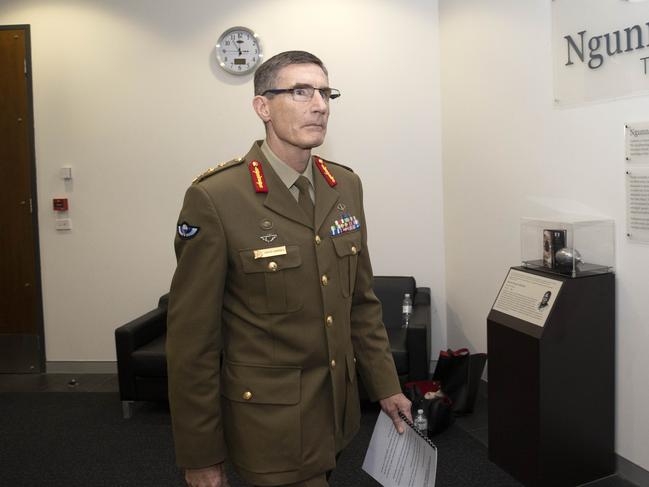
A soldier gave a false account of the incident on three occasions including to the inquiry and suborned another to give false evidence.
Describing the behaviour as “disgraceful’’, General Campbell said a “warrior culture’’ with a “misplaced focus on prestige, status and power’’ had infected some Special Forces commanders.
“Cutting corners, ignoring and bending rules was normalised,’’ he said.
“It is alleged that some patrols took the law into their own hands, rules were broken, stories concocted, lies told and prisoners killed.
“And once that rule was broken, so too, for some, was any further restraint.’’
The four-year inquiry by the Inspector-General of the Australian Defence Force found that elite soldiers had murdered farmers, civilians, prisoners and seriously-wounded fighters who no longer posed a threat.
Some of the killings were carried out within the context of the soldiers’ unhappiness with releasing prisoners they believed were likely involved with the Taliban.
While the entire SASR was not disbanded, the 2 Squadron was struck from the Army’s Order of Battle.
The heavily-redacted report released in Canberra did not name any individuals or detail specific incidents.
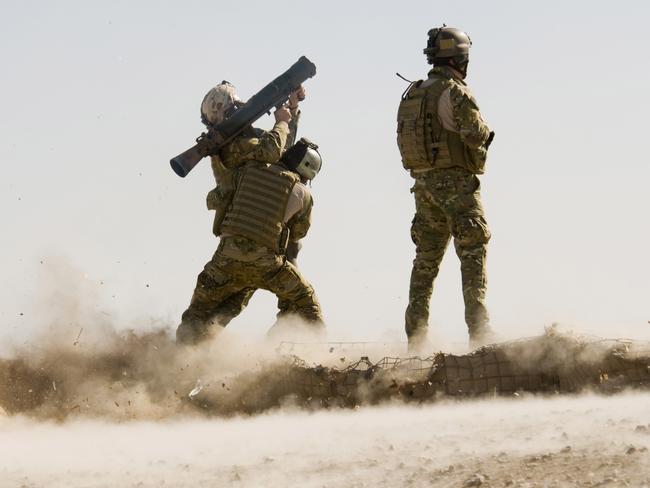
General Campbell said the ADF’s rules of engagement meant people detained in Afghanistan were released if they were not formally linked to insurgent activity.
“Catch and release, as it came to be known throughout the Coalition, was frustrating and carried with it some risk but it was also understood to be a necessary measure, a point of balance, between the needs of security and the needs of justice,’’ he said.
The report further found some patrols had competed with each other to see who could get the most kills, and used “throwdown’’ weapons and other military equipment to plant next to the bodies of murdered non-combatants, to falsely create the impression they had been legitimate targets.
In a chilling finding that mirrored incidents by American soldiers in the Iraqi prison of Abu Ghraib, the report also found that while no specific incident could be identified, it was “likely’’ Australian soldiers had used dogs to savage and injure people, including those being questioned.
It also found that senior soldiers had ordered junior members of their patrol to murder prisoners as part of a “blooding’’ ritual for their first kill, a practice General Campbell described as “appalling.’’
“In (redacted) different Special Operations Task Group rotations, the inquiry has found there is credible information that junior soldiers were required by their patrol commanders to shoot a prisoner, in order to achieve the soldier’s first kill in a practice that was known as blooding,’’ the report found.
“ … Typically the patrol commander would take a person under control and the junior member, who would then be directed to kill the person under control. ‘Throwdowns’ would be placed with the body and a ‘cover story’ was created for the purposes of operational reporting and to deflect scrutiny. This was reinforced with a code of silence.’’
As the fallout continued, the ADF on Thursday said it would strip the Meritorious Unit Citation from the entire Special Operation Task Group personnel.
The ADF would also investigate whether medals should be stripped from those awarded honours for gallantry, valour and bravery, pending the outcome of future proceedings including criminal trials.
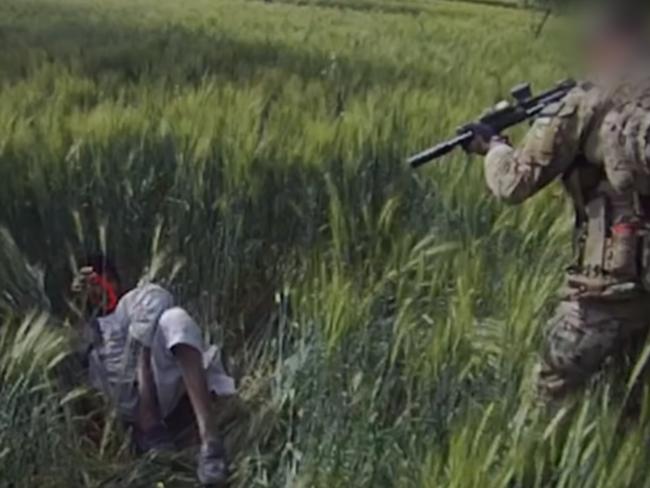
Gen. Campbell would not identify any individuals or specific incident, but said some of these incidents identified by the IGADF report took place in 2009 and 2010, with the majority occurring in the latter years of 2012 and 2013.
“Alleged perpetrators deployed on between one and five Special Operations Task Group rotations over the period 2006-2013,’’ he said.
The report also found there was competition between some patrols “to outscore other patrols in the number of enemy killed in action.’’
“The nature and extent of the misconduct allegedly committed by ADF members on operations in Afghanistan is very confronting,’’ the report found.
“None of these incidents are disputable decisions made under pressure in the heat of battle.’’
The inquiry recommended administrative action be taken against those who remained in the ADF.
It also called for compensation to be made to the Afghan families of those killed.
“This will be an important step in rehabilitating Australia’s international reputation, in particular with Afghanistan, and it is simply the right thing to do.’’
General Campbell said he would accept all 143 recommendations spelled out by the report.
Prime Minister Scott Morrison has thrown his support behind Australia’s defence forces but has reiterated that allegations of war crimes will be pursued to ensure that “justice is indeed served”.
In a wide-ranging exclusive with Sky News host Chris Kenny, Mr Morrison said the “high esteem” in which Australia hold our defence forces has been earned.
“It has been earned over more than a century and that stands,” he said.
“The choice that is made by service men and women to pull on that uniform and to serve their country in the way they do, from that moment on, they have earned our respect and their conduct beyond that in the overwhelming majority of the defence forces experience, backs that up.
Mr Morrison provided his insights into the findings of the report into alleged war crimes by Australian special forces saying it will be taken “very seriously”.’
“Where things don’t measure up to those standards, as a country and indeed as a defence force, we look seriously at those issues, take them seriously and deal with them seriously,” he said.
He added: “We will take this very seriously and we will deal with it as Australians under the Australian rule of law,” Mr Morrison said.
“The members of our defence forces, more than any other, would expect and want us to do that.
“This report will be received; it will be provided to the office of a special investigator to pursue any matters that must be pursued and can be pursued under our rule of law and that justice is indeed served.
“And these are the assurances that I’ve provided to the Afghan government, that this is the process that we will follow”.
KEY INCIDENTS
The Brereton report detailed 39 damning incidents. Here are some of the most serious.
2009
Incident: A Special Forces member unlawfully and wilfully shot dead a local when he was an Afghan captive. He was “expressly or implicitly directed or encouraged to kill the male.
Recommendation: “There is a realistic prospect of a criminal investigation obtaining sufficient evidence to charge with the war crime of murder, and/or counselling, procuring or inciting the war crime of murder.”
2010
Incident: Severe physical pain was inflicted on an Afghan male causing injury when he was neither a member of an organised group nor engaging in any hostilities.
Recommendation: “There is a realistic prospect of a criminal investigation obtaining sufficient evidence to charge with the war crime of cruel treatment.”
Incident: Afghan male wilfully and unlawfully shot dead when he was under control, unarmed and posing no threat. A weapon was placed near him to convey “ the false appearance that he was a combatant and to deceive future inquires.”
Another two Afghan males were also killed when posing no threat during this action.
Recommendation: “There is a realistic prospect of a criminal investigation obtaining sufficient evidence to charge with the war crime of murder, and/or counselling, procuring or inciting the war crime of murder.”
2012
Incident: An unarmed Afghan prisoner killed. The soldier “photographed and provided a false narrative that was carrying them at the time he was killed, in order to deflect and mislead any inquiry into the circumstances of his death.”
Recommendation: “There is a realistic prospect of obtaining sufficient evidence to charge with the murder.”
Incident: Local killed when he was not engaged in hostilities. The soldier placed or aided or abetted a weapon he was carrying in his backpack for use as a “throwdown” onto the body to disguise the fact he was not a combatant.
Recommendation: “There is a realistic prospect of obtaining sufficient evidence to charge with the war crime of murder.”
Incident: An unidentified soldier from “force element” was directed, urged or encouraged to kill a local in the Uruzgan Province by a more senior soldier. That soldier placed a weapon near body to misrepresent the situation and later made a false report.
Recommendation: “There is a realistic prospect of a criminal investigation obtaining sufficient evidence to charge as an accessory after the fact to the war crime of murder”
Incident: Local Afghan man shot dead unarmed, not participating in hostilities, not posing a threat and in the course of surrendering. Weapon placed to misrepresent situation. Soldier then made a false claim he was an insurgent tactically manoeuvring against Force Element.
Recommendation: “There is a realistic prospect of a criminal investigation obtaining sufficient evidence to charge with the war crime of murder.”
Incident: Unarmed local killed and evidence planted to fraudulently misrepresent the scene and that he was a combatant and tactically moving into a firing position to ambush the clearing Force Element.
Recommendation: “There is a realistic prospect of a criminal investigation obtaining sufficient evidence to charge with the war crime of murder”
Incident: Unarmed local killed when not engaged in any hostilities with the soldier failing to control subordinates and planted evidence. Two other locals were also killed with the circumstances of his death misreported as a legitimate engagement. False evidence and reports were also used.
Recommendation: Two charges of war crime murder … and the third “Although the evidence currently available to the Inquiry does not enable the person or persons responsible for the murder of to be identified, there is a realistic prospect of a criminal investigation obtaining further evidence sufficient to charge an identified person with the war crime of murder.”
Incident: Unidentified male killed the soldier knowing he was not engaged in hostilities and or were reckless as to whether they were directly involved, and misreported the contact.
Recommendation: “Although the evidence currently available to the Inquiry does not enable the person or persons responsible for the murder of the unidentified Afghan male to be identified, there is a realistic prospect of a criminal investigation obtaining further evidence sufficient to charge an identified person with the war crime of murder of the Afghan male.”
Incident: An Afghan prisoner suffered physical pain or suffering when he was under control and not posing a threat. A false report was made to suggest an attempt to grab a weapon and turn it against him, provoked the assault.
Recommendation: “There is a realistic prospect of obtaining sufficient evidence to charge with the war crime of cruel treatment.”
Incident: Local unlawfully killed and soldier placed, or aided and abetted on placing “throw down” evidence. He then aided and abetted or was knowingly concerned with the killed of a second local. He then gave false evidence to and sought to deceive the Inquiry Officer in that he gave a written statement that included a number of untrue statements, and he falsely claimed that when he shot and killed the local national on 2012 he acted in self‐defence, and that there was no time to neutralise the threat. Whereas in truth, he lied … with the intent that the truth should not be discovered; and he knew at the time he shot and killed.”
Recommendation: There is a realistic prospect of a criminal investigation obtaining sufficient evidence to charge with the war crime of the murder
Incident: A soldier wilfully and unlawfully milled an Afghan prisoner. An operator expressly or implicitly directed or encouraged another to kill the man, or alternatively failed to exercise proper control over him by failing to prevent the killing. Evidence was faked to falsely convey that the man was a combatant.
Recommendation: One operator referred to the police for the war crime or murder or the offence of counselling, procuring or inciting the war crime of murder.
A second soldier should be granted immunity if he agrees to give evidence for the prosecution.
Incident: A soldier, in circumstances that are largely redacted, took an Afghani prisoner to a remote part of a compound, forced him to the ground, and or the direction or encouragement of another, shot him in the head. Evidence was then faked to conceal that he was not engaged in hostilities at the time of his death.
A soldier gave a false account of the incident on three occasions including to the inquiry and suborned another to give false evidence.
Recommendation: Referral to police for the war crime of murder and/or counselling, procuring or inciting the war crime of murder.
A second soldier should be granted immunity should he agreed to give evidence for the prosecution.
Incident: An unknown number of Afghani nationals were killed while not armed and posing no threats.
Several soldiers knew they were unarmed and not participating in hostilities, or were recklessly indifferent to whether this was the case.
Recommendation: Referral to police for the war crime o murder or of counselling procuring or inciting the war crime of murder, or on the basis of joint criminal enterprise.
Incident: A soldier inflicted serve physical and/or mental pain and/or suffering upon a male Afghan non-combatant, who was under control and handcuffed.
A soldier shot dead a handcuffed male non-combatant.
A soldier expressly or implicitly directed his subordinate to kill one of the prisoners, or, alternatively, failed to exercise proper control by knowing he was about to kill the prisoners and failing to prevent it.
Recommendation: Referral to police for the war crimes of cruel treatment and murder, and or counselling, procuring or inciting the war crime of murder.
Referral to police of a second soldier for the crime of murder.
Incident: There was credible information that three male Afghans prisoners were killed by what appears to be three soldiers. There was further credible information that an soldier killed an unspecified number of Afghans. One soldier expressly or implicitly directed or encouraged two of the soldiers to kill two of the Afghan prisoners, or, alternatively, failed to exercise proper control of his subordinates knowing they were about to undertake unlawful killings.
Recommendation: No referrals in relation to two soldiers.
One soldier to be referred to police for the war crime o murder.
One soldier to be referred for the war crime or murder, or the offence of counselling, procuring or inciting the war crime of murder.
Incident: An soldier shot dead an unidentified man who was unarmed, under control and posing no threat. Another soldier expressly or implicitly directed or encouraged the killing, or, alternatively, failed to exercise proper control to prevent the killing. Or submit it for investigation and prosecution.
A throwdown was used.
Recommendation: Referral to police for the war crime of murder and/or counselling/ procuring or inciting the war crime of murder, or on the basis of command responsibility. The “junior participant’’ who acted under the direction and influence or the other soldier should be granted immunity should be agreed to give evidence for the prosecution.
Incident: An soldier killed an unidentified man who was under control and not posing any threat.
It appeared someone else directed or urged them to do it.
Recommendation: Referral to police for potential charge of murder, or counselling/procuring or inciting the crime of murder on the basis of command responsibility.
Incident: Two soldiers shot dead male prisoner. Another soldier expressly or implicitly directed or encouraged two others to kill the prisoners, or, alternatively, failed to exercise control properly, knowing they were about to kill them. Throwdowns were used to falsely indicate the men were combatants.
Recommendation: One soldier referred to the police for the war crime of murder. Another referred for murder and/or counselling/procuring or inciting the war crime of murder. A third soldier to receive immunity from prosecution should he agreed to give evidence for the prosecution.
Incident: A male Afghan was shot dead when unarmed and taken prisoner by Australian forces.
A soldier “expressly or implicitly directed his subordinate’’ to kill the man, or, alternatively, failed to exercise proper control over his subordinate. Knowing he was about to kill the man he failed to take all reasonable measures to prevent it. A throwdown was used to falsely indicate the man was a combatant.
Recommendation: Refer to police for the war crime of murder and/or counselling, procuring or inciting the war crime of murder.
Incident: Members of a patrol killed civilians when they were unarmed, and places something at the scene for the purposes of photographs to create the false appearance the deceased were engaged in hostilities. Further that the incidents was misreported as one of armed insurgents who had engaged the patrol.
Recommendation: Three referrals to police for investigation for the war crime of murder and/or joint criminal enterprise. One referral for investigation of command responsibility.
2013
Incident: A male was killed when he was unarmed, under control and not engaged in hostilities, and a throwdown used to “fraudulently represent that he was a combatant.’’
Further, that another soldier failed to exercise control properly over his subordinate, failed to prevent the unlawful killing and was complicit in the mater misreporting of the incident.
Recommendation: The case be referred to police for a potential charge of the war crime of murder, while the second case be referred for a potential charge of murder, command responsibility or accessory after the fact.
Support services:
The Defence all-hours Support Line is a confidential telephone and online service for ADF members and their families 1800 628 036
Open Arms provides 24-hour free and confidential counselling and support for current and former ADF members and their families 1800 011 046, or through SafeZone on 1800 142 072.
Crisis support from Lifeline is available on 13 11 14
MORE NEWS
Shock war crimes report: What happens next
3000 soldiers could lose medals
Actions of few endangering others
Five words Australia’s military must use right now
War hero’s army squadron disbanded
‘Lies told’: Defence Force chief’s speech stuns
Originally published as Australian war crimes inquiry: 25 elite soldiers linked to murder of 39 civilians



